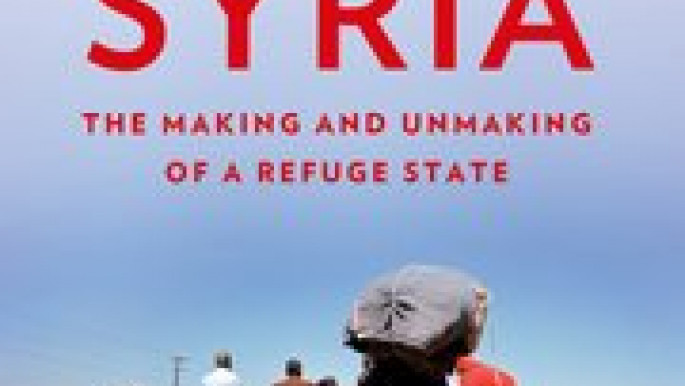
Syria: The making and unmaking of a refugee state
Post-war European states have never had to deal with arrivals on this scale and in such a short time period. While we take for granted how multicultural and diverse cities and towns have become across Europe have become, historically speaking, European societies have tended towards religious and cultural homogeneity, with a long history of expelling minorities.
European states have little in the way of experience to draw on, when dealing with the scale of today's challenges. 'Syria: The making and unmaking of a refugee state' by Dawn Chatty argues that lessons on absorbing and integrating refugee populations into Europe should, in fact, be drawn from Syrian history.
Emeritus Professor of Anthropology and Forced Migration at the University of Oxford, Chatty informs us that Syria has a history of taking in refugee populations, that stretches back millennia.
In the modern period, Circassians, Armenians, Russians, Kurds, Palestinians and Iraqis (to name a few) have made Syria their home.
The late Ottoman Empire (from the 19th century onwards) had to deal with its own refugee crisis, as various nationalist forces sweeping the continent forced millions of European Muslims out of their homelands.
The 1821-1830 Greek War for Independence from the Ottoman Empire caused an influx of Greek Muslim refugees who the Ottomans had to resettle.
 |
The Ottomans settled thousands of Circassians in the Syrian Golan Heights because they reasoned it was the easiest place for them to integrate |  |
According to Chatty, the Ottomans created al-Muhajreen (the migrants) neighbourhood in Damascus to help house Greek Muslims from Crete. However, as the century went on more and more Muslim populations began crossing into the Ottoman frontiers.
As the Russian empire expanded in the Caucasus and Eastern Europe, the Ottomans realised they needed an organised response to millions of people being displaced.
 |
|
In 1857, the Ottoman government issued a refugee code to help better organise local authorities in dealing with their refugee crisis.
The code stated refugees would have freedom to worship, whatever their faith, and they were permitted to set up places of worship. The code also promised land to immigrant families/groups and when news of this code spread through Europe, not only Muslims, but Christians from as far afield as Poland and Germany began flooding the Ottoman government with applications and requests for asylum.
The number of applications plus high numbers of refugees entering the Empire led the Ottoman government to set up the General Administration of Immigration.
This, argues Chatty, was the first such agency set up to deal with a refugee crisis in modern history. The agency had to consider a number of factors including how to integrate new arrivals and make them part of local societies and cultures without the new arrivals losing their own culture.
For instance the Ottomans settled thousands of Circassians in the Syrian Golan Heights because they reasoned it was the easiest place for them to integrate. The Circassians had fled the southern Caucasus after an expanding Russian Empire expelled them.
Many of the Circassians who had arrived in the Ottoman Empire had come from rural and mountainous terrain and Ottoman officials took great care to find territory that matched the climate and culture they had come from.
The scheme seems to have worked as Circassians who settled in the Golan took very well to their new homes.
 |
Ottoman officials took great care to find territory that matched the climate and culture they had come from |  |
Syria was central to Ottoman and post-Ottoman refugee settlements. Syrian culture is made up of different ethnic and religious groups living side by side. Social tolerance of difference is quite high. Hospitality is both a religious and cultural norm in Syria, which makes them particularly welcoming towards outsiders.
The book explores how Syrian society not only deals with refugee intakes from the Circassians to Iraqis post-2003, but also how refugee communities form identity and culture within their new adopted home.
Of particular interest is how attached all these groups became to Syria and how it was a part of them, rather than a separate entity to their culture and identity.
Read more: Spain offers healthcare to stranded migrants in Italy spat
To understand how Syria achieved this could provide valuable insight for European states dealing with its new refugee populations.
The book only offers a glimpse into this, but it could provide a useful starting point for cross-cultural and transhistorical exchanges.
Usman Butt is a multimedia television researcher, filmmaker and writer based in London. Usman read International Relations and Arabic Language at the University of Westminster and completed a Master of Arts in Palestine Studies at the University of Exeter.
Follow him on Twitter: @TheUsmanButt
Opinions expressed in this article remain those of the author and do not necessarily represent those of The New Arab, its editorial board or staff.





 Follow the Middle East's top stories in English at The New Arab on Google News
Follow the Middle East's top stories in English at The New Arab on Google News


